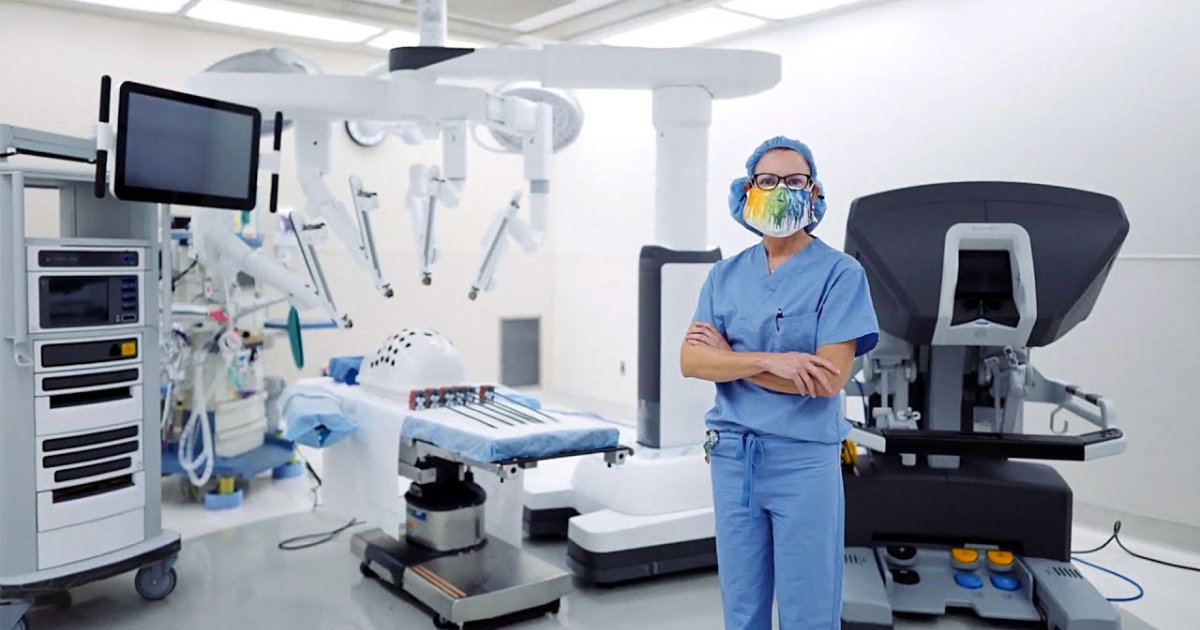MTF Surgery Procedures » Peritoneal Vaginoplasty
Peritoneal Pull-Through Vaginoplasty
An Old Approach With a New Application
 Peritoneal
Pull-Through Vaginoplasty, or Peritoneal Vaginoplasty, is a new
approach to Vaginoplasty that is based on a gynecological
procedure called the Davydov Procedure. First described
in Russian literature, the Davydov Procedure uses abdominal
(peritoneal) lining for the creation of the neo-vagina in women
born without a vaginal canal.
Peritoneal
Pull-Through Vaginoplasty, or Peritoneal Vaginoplasty, is a new
approach to Vaginoplasty that is based on a gynecological
procedure called the Davydov Procedure. First described
in Russian literature, the Davydov Procedure uses abdominal
(peritoneal) lining for the creation of the neo-vagina in women
born without a vaginal canal.
A recent modification was the adaptation of the technique for creating a neo-vagina in transgender women. Peritoneal Vaginoplasty has a number of potential benefits and in the years to come could potentially eclipse other more established procedures, but there's a problem: a lack of long-term data on outcomes for patients who've had either the Davydov Procedure or Peritoneal Vaginoplasty.
How Peritoneal Vaginoplasty is Performed
During surgery, a laparoscope and several instruments are inserted through small 5-8 mm incisions on the abdomen. These instruments allow dissection of the potential space between the lower urinary tract (urethra, prostatic urethra, and bladder) and rectum. This space will become the future vagina. Peritoneum flaps can be pulled through to the area between the urethra and the rectum to line a portion of the vaginal canal. The top of the vagina is separated from the abdominal contents by closing the peritoneal lining approximately 15 cm from the vaginal opening. The remainder of the vaginoplasty procedures (labiaplasty, clitoroplasty, penectomy, orchiectomy, partial urethrectomy, and other associated procedures) are similar to that of the penile inversion technique. Source: MoZaicCare.net
Dr. Heidi
Wittenberg is a Urogynecologist, Director of MoZaic
Care, which specializes in gender affirming genital and pelvic
surgeries, and a Founder Surgeon and Co-Director for the first
Center of Excellence in Gender Confirmation Surgery, at Greenbrae
Surgery Center. According
to Dr. Wittenberg, Peritoneal Vaginoplasty has the
potential to offer a number of benefits:
- Self-lubricating lining with some elasticity
- More vaginal depth
- Requires less dilation, less douching
- Requires less pre-op hair removal
- Less risk of prolapse
- May be less risky than Rectosigmoid Vaginoplasty, plus no odorous mucus discharge and no need to monitor colon pathology
With all this going for Peritoneal Vaginoplasty, it may seem surprising that it didn't go mainstream until just recently, but the origins of the Davydov Procedure are in gynecology whereas the development of Gender Affirmation procedures has often been in the hands of plastic surgeons. As a Urogynecologist, Dr. Wittenberg has a unique skill set in combined robotic, laparoscopic, and pelvic surgery, allowing her to offer Peritoneal Vaginoplasty.

Photo credit: Dignity Health's Saint Francis Memorial Hospital.
Source:
Excellence in Gender-Affirming Surgical Care - An Interview With Dr. Heidi Wittenberg
Dr. Wittenberg points out that despite how promising Peritoneal Vaginoplasty is, the lack of long-term data into patients' post-operative outcomes is a concern and ultimately the procedure may carry higher risk than Penile Inversion Vaginoplasty. When performed in combination with Penile Inversion Vaginoplasty, Peritoneal Vaginoplasty has all the same risks as Penile Inversion, plus additional risks from the abdominal laparoscopic part of the procedure, including organ injury, ileus, herniation, and more. Until there's more data, Peritoneal Vaginoplasty is best applied in patients who:
- Require salvage vaginal reconstruction or vaginal length augmentation and whose only other option is to use a segment of colon;
- Need more tissue than what would be available with Penile Inversion Vaginoplasty;
- Are seeking a non-binary procedure, such as Penile Preservation Vaginoplasty;
- Have atrophic anatomy, whether congenital, acquired or as a result of having been on puberty blockers.
WATCH NOW: An update from March 2022 on the differences between full length Peritoneal Pull Through Vaginoplasty and Hybrid (penile inversion + peritoneal flap.) This talk by Dr. Wittenberg addresses sensation, depth and optimizations to Labiaplasty techniques. YouTube sign-in required.
Peritoneal Pull-Through Vaginoplasty is a new development in Gender Confirmation Surgery but with decades-old origins in gynecology. While it has the potential to satisfy the goals of MTF Vaginoplasty, with more features and potentially less risk than other procedures, the lack of long-term data assigns a secondary status to Peritoneal Vaginoplasty... for now.
Important Note: There are different ways of performing Peritoneal Vaginoplasty. The method developed by Dr. Rachel Bluebond-Langner and Dr. Lee Zhao at NYU Langone Health in New York City—Robotic-Assisted Peritoneal Flap Vaginoplasty—is distinct from Peritoneal Pull-Through Vaginoplasty. This method is also offered by Dr. Min Jun in San Francisco who learned it while completing fellowship training at NYU.
Surgeons who offer Peritoneal Pull-Through Vaginoplasty:
- Dr. Heidi Wittenberg & Dr. Adam Bonnington – San Francisco
- Dr. Kenan Celtik – San Francisco
- Dr. Praful Ramineni – Washington, D.C.
- Dr. Jonathan Keith & Dr. Drew Marano - Livingston, NJ & New York City
- Dr. Gabriel Del Corral – Baltimore and Washington DC
- Dr. Loren Schechter – Chicago
- Dr. Katherine Gast – Madison WI
- Dr. Marci Bowers - Burlingame CA
- Dr. Shubham Gupta - Cleveland
- Dr. Kirtishri Mishra - Cleveland
- Dr. Jess Ting & Dr. Bella Avanessian - New York City
- Dr. Miroslav Djordjevic – New York City & Belgrade, Serbia
- Dr. Christi Butler – San Francisco
- Dr. Joseph Pariser – Minneapolis
- Dr. Ervin Kocjancic – Chicago
- Dr. Parag Telang – Mumbai, India
More Vaginoplasty Techniques:
- Robotic-Assisted Peritoneal Vaginoplasty
- Penile Inversion Vaginoplasty
- Rectosigmoid Vaginoplasty
- Olmec Sigma Lead Vaginoplasty
Also see:
- Vaginoplasty Surgeons
- Journal articles about Peritoneal Vaginoplasty
- Vulvoplasty - Assessing an Alternative to Vaginoplasty
Last updated: 03/24/25
